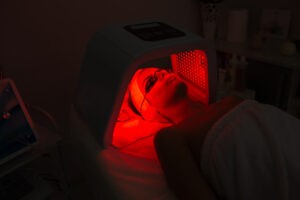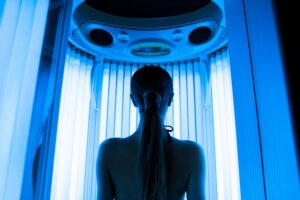
Laser therapy has become a popular, non-invasive option for treating a variety of skin and health concerns. From improving skin texture and reducing pigmentation to addressing deeper tissue concerns, lasers offer a wide range of benefits. But many patients wonder, “What class of laser is being used, and what does that mean for my treatment?” Understanding laser classifications is key to knowing the safety and effectiveness of the treatments you receive.
What Are Laser Classes?
Understanding Laser Classifications
Lasers are categorized into different classes based on their power output and potential risks. These classes range from Class 1 (low risk) to Class 4 (high power). The higher the class, the more powerful the laser, which requires more safety precautions during use.
- Class 1: Typically harmless and used in devices like laser printers.
- Class 2: Low-power visible lasers, often used in laser pointers.
- Class 3: These include 3R and 3B lasers, which are more powerful and require some safety precautions.
- Class 4: The most powerful lasers, used in medical treatments and surgeries.
Why Laser Classifications Matter
The classification of a laser determines how intense the treatment is, how deeply the laser penetrates, and what safety measures need to be taken. For patients, it helps balance the effectiveness of the treatment with safety, ensuring that the appropriate class of laser is used for their skin concern.
What Class Are Therapy Lasers?
Class 3 and Class 4 Lasers in Therapy
- Class 3B Lasers: Often used for low-level laser therapy (LLLT), also known as cold lasers. These are non-invasive and stimulate cellular repair and healing without damaging the surface of the skin. They are popular for promoting tissue repair and reducing inflammation.
- Class 4 Lasers: These higher-powered lasers are used for more advanced treatments, including surgical procedures and high-intensity therapies for pain relief and tissue regeneration. Class 4 lasers penetrate deeper into tissues but require more safety measures due to their power.
UltraClear Laser: A Class 4 Laser
UltraClear Laser, offered at Nuveau, is a Class 4 laser designed for superficial skin treatments. This classification means the laser operates at a safe level, minimizing risks while delivering therapeutic effects. UltraClear is particularly effective for skin rejuvenation, reducing signs of aging, sun damage, and pigmentation issues—all while ensuring a comfortable experience with little to no downtime.
How Therapy Lasers Work
Laser Therapy Mechanism
Therapy lasers use concentrated light energy to penetrate the skin and tissues. This energy is absorbed by the cells, stimulating cellular repair and collagen production, or in the case of deeper treatments, promoting tissue healing. Different laser wavelengths target specific layers of the skin or tissue, allowing for customized treatments based on the patient’s needs. For example, UltraClear Laser targets superficial skin concerns, while Class 3B or Class 4 lasers can address deeper tissues.
Safety of Laser Treatments Based on Class
- Class 2 and 3B lasers are ideal for non-invasive treatments with minimal risk, making them suitable for superficial skin concerns like pigmentation, fine lines, and texture.
- Class 4 lasers offer more aggressive treatments for deeper concerns but require strict safety protocols due to their intensity. Protective eyewear and skin care protocols are critical during these treatments.
What to Expect from Laser Therapy at Nuveau
Personalized Treatment Plans
At Nuveau, we offer a variety of laser treatments designed to address your unique skin and wellness concerns. Whether you’re receiving a Class 2 laser treatment or a more advanced therapy with a Class 4 laser like UltraClear for skin rejuvenation, our team ensures that your treatment is customized for optimal results.
Safety Protocols for Laser Therapy
Your safety is our top priority. At Nuveau, we follow strict safety guidelines based on the class of the laser being used. This includes protective eyewear for both patients and staff, proper calibration of the laser devices, and post-treatment care instructions to protect your skin and enhance results.
Understanding the class of therapy lasers helps patients make informed decisions about their treatments, ensuring both effectiveness and safety. At Nuveau, we use the latest technology and follow strict protocols to provide the best possible results.
To learn more about the different types of laser therapy available and which class is right for your needs, schedule a consultation with Nuveau today.

